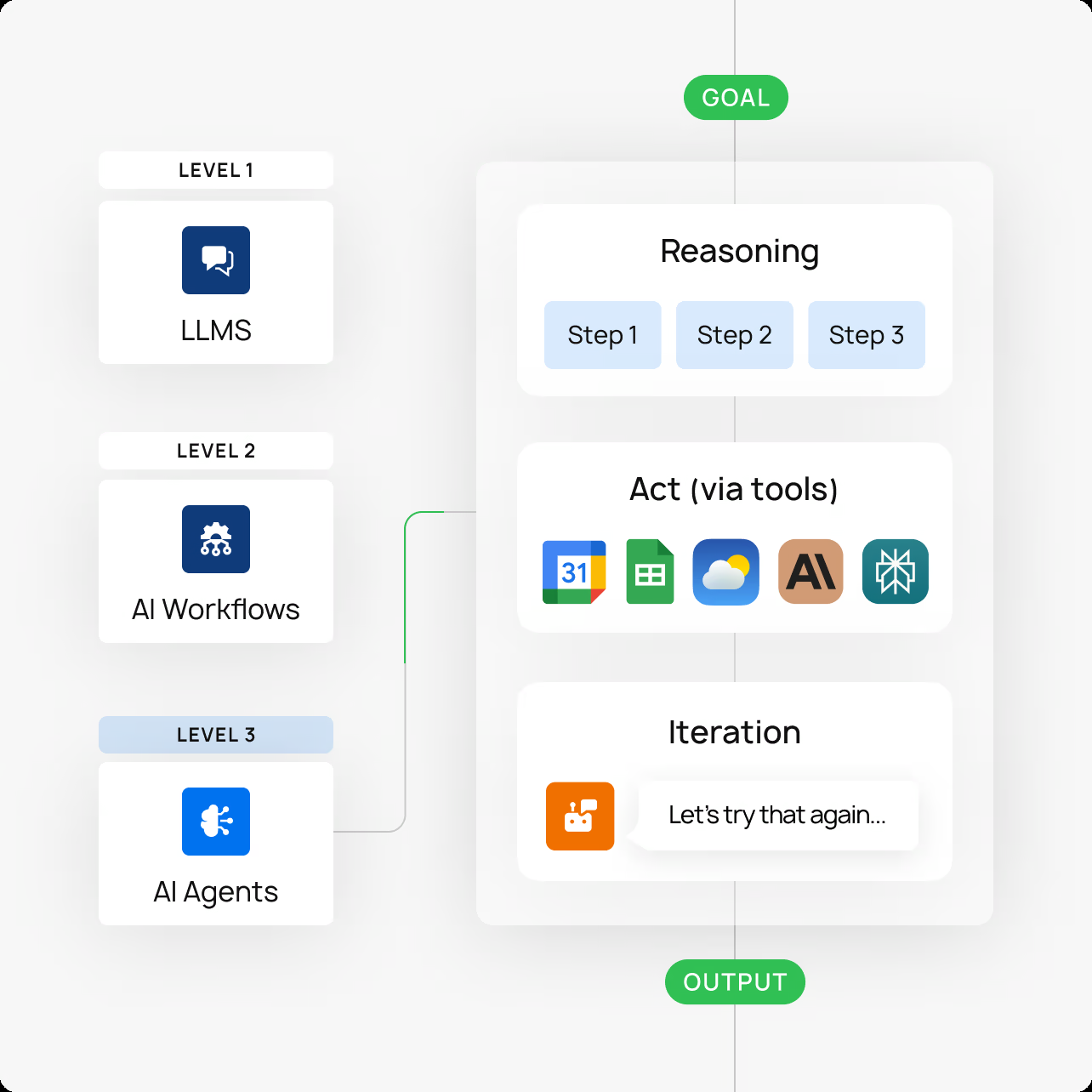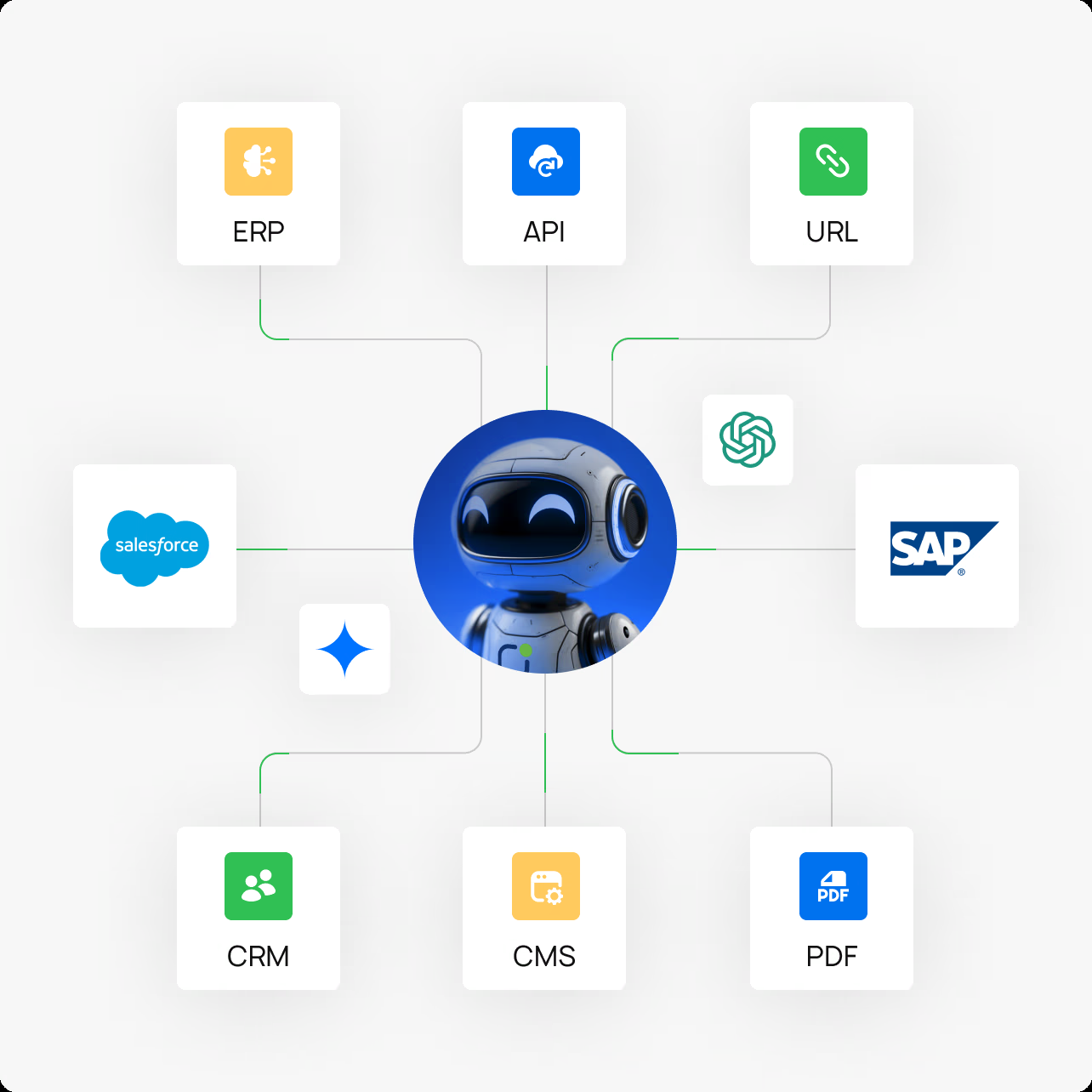25 Best AI Marketing Tools You Need in 2025


The marketing landscape of 2025 is being redrawn, not by human hands alone, but by the silent, powerful force of artificial intelligence. This is not a distant, futuristic concept; it is the present-day reality of our industry. Consider this: global AI in marketing is not just growing, it’s exploding, with projections showing a multi-billion dollar market that is fundamentally altering how brands connect with consumers on a granular level. The vague promises of AI have given way to tangible results. We’re witnessing a paradigm shift where hyper-personalization is not just an aspiration but an automated standard, where predictive analytics unearth customer behaviors before they even happen, and where intelligent automation is liberating marketing teams from monotonous tasks to focus on what humans do best: strategy, creativity, and building genuine relationships. The question is no longer if you should adopt AI, but how you will leverage it to survive and thrive in an increasingly competitive digital ecosystem.
In this era of unprecedented technological evolution, simply knowing about AI is no longer enough. Marketers must become adept at wielding it as a natural extension of their own expertise. However, with a new AI tool launching seemingly every hour, the digital marketplace has become a bewildering and noisy space. How do you distinguish the truly transformative platforms from the fleeting trends? How do you assemble an AI-powered marketing stack that is not only functional but synergistic, providing a genuine and sustainable competitive advantage? This is the critical challenge facing every marketing professional today, and it’s precisely the challenge this guide is designed to solve. Welcome to your definitive guide to the 25 best AI marketing tools you need in 2025. This is more than just a list; it is a strategic blueprint designed to equip you with the knowledge and confidence to navigate the future of marketing.
To ensure you get the most value from this guide, we’ve structured it to be a comprehensive learning journey. Before we dive into the tools themselves, we’ll first demystify the engine that powers them. We will break down the core technologies like Machine Learning, Natural Language Processing, and Generative AI, explaining in simple terms how they function within a marketing context. We’ll also explore the “Four Types of AI,” providing a foundational understanding that will empower you to make more informed decisions about which tools are right for your business.
Next, we’ll address the pivotal question on every marketer’s mind: with so many options, which AI tool is truly the best for marketing? We’ll put one platform under the microscope in our special spotlight section on indigitall. You’ll discover how its integrated, all-in-one approach—from its sophisticated AI Agent that handles customer interactions to its AI-optimized customer journeys that nurture leads across every channel—makes it a formidable contender for the ultimate marketing solution.
Then, we’ll unveil the core of our guide: the comprehensive list of the 25 best AI marketing tools for 2025. We have meticulously researched, vetted, and categorized these tools across the most critical marketing functions—including Content Creation & SEO, Customer Engagement & Personalization, Advertising & Social Media, Market Analysis & Data Insights, and Automation & Productivity—to help you easily identify the perfect solutions for your specific goals and challenges. Finally, for those obsessed with data-driven strategy, we’ll take a deeper dive into the best AI tools specifically for market analysis, comparing the top players to help you uncover the insights that will shape your future campaigns.
So, whether you’re an AI novice looking to take your first steps or a seasoned marketer aiming to refine your digital arsenal, prepare to discover the tools that will not only help you compete but dominate in 2025. Let’s begin.

II. What Kind of AI is Used in Marketing?
Before you can effectively choose and implement AI tools, it’s crucial to understand the core technologies that power them. “Artificial Intelligence” isn’t a single, monolithic entity; it’s an umbrella term for a suite of powerful computational techniques. For marketers, four types of AI capabilities have become particularly transformative. Understanding what they are and how they work will empower you to see beyond the hype and identify the tools that can deliver real, measurable results for your business.
- Machine Learning (ML): The Pattern-Finding Powerhouse At its heart, Machine Learning is about teaching computers to learn from data without being explicitly programmed for every possible scenario. ML algorithms sift through vast datasets to identify patterns, make connections, and generate predictions. In marketing, this is the engine behind true personalization and optimization. It allows for sophisticated customer segmentation, automatically grouping users based on complex behaviors like purchase history, website interactions, and engagement levels—far beyond simple demographics. ML also supercharges campaign optimization, enabling platforms to dynamically adjust ad spend, test thousands of creative variations simultaneously, and allocate resources to the channels delivering the highest ROI in real-time.
- Real-World Example: Think about Amazon’s “Frequently Bought Together” or Netflix’s personalized show recommendations. These aren’t curated by humans. They are the product of ML algorithms analyzing the behavior of millions of users to predict what you are most likely to buy or watch next.
- Natural Language Processing (NLP): Bridging the Human-Computer Gap Natural Language Processing is the branch of AI that gives machines the ability to understand, interpret, and generate human language. It’s the technology that makes human-computer interaction feel intuitive and, well, natural. For marketers, NLP is the key to unlocking insights from unstructured text data and automating communication at scale. Its most visible application is in chatbots and virtual assistants, which can handle customer queries, qualify leads, and provide 24/7 support. NLP also drives sentiment analysis, allowing brands to monitor social media and review sites to gauge public perception of their products or campaigns. Finally, it’s a cornerstone of many AI writing assistants, helping to generate and refine content from email subject lines to entire blog posts.
- Real-World Example: When you ask Siri or Google Assistant a question, you’re using NLP. In marketing, a customer service chatbot that understands your typed query, accesses order information, and provides a relevant update on your shipment is a perfect example of NLP in action.
- Generative AI: The Creative Content Engine Generative AI is a revolutionary subset of artificial intelligence that doesn’t just analyze data—it creates something entirely new. By learning from enormous datasets of text, images, sounds, and code, these models can generate original, high-quality content in response to a simple prompt. This has been a game-changer for marketing teams, drastically accelerating content creation workflows. Marketers can now use Generative AI to brainstorm ideas, draft blog posts, write dozens of ad copy variations, create unique images for social media campaigns, and even produce scripts for video ads. It allows for a level of content velocity and creative experimentation that was previously unimaginable.
- Real-World Example: Using a tool like Jasper to write a first draft of a blog post or employing Midjourney to create a custom illustration for a landing page are prime examples. The user provides a text prompt, and the AI generates a completely new piece of content.
- Predictive Analytics: Forecasting the Future While closely related to Machine Learning, Predictive Analytics is focused specifically on using historical and real-time data to forecast future events. It answers the question, “What is most likely to happen next?” For marketers, this is like having a crystal ball. It enables you to forecast trends by analyzing market data to see what products or services will be in high demand. More importantly, it helps predict customer behavior, identifying which customers are at risk of churning, which leads are most likely to convert, and what the lifetime value of a new customer might be. This allows marketing and sales teams to be proactive, intervening with a special offer to retain a customer or prioritizing their efforts on the most promising leads.
- Real-World Example: A sophisticated e-commerce platform using predictive analytics might identify a customer who hasn’t purchased in their usual 60-day cycle. The system can then automatically trigger a personalized email with a “We miss you!” discount to proactively encourage their return before they are lost for good.

III. The 4 Types of AI Tools
Just as there are different technologies powering AI, there are also different classifications of AI based on their capabilities and level of sophistication. Understanding these four primary types—from the simple to the sentient—provides a crucial framework for evaluating the marketing tools you encounter. It helps you grasp not only what a tool can do today but also where the industry is heading tomorrow.
- 1. Reactive Machines: The Foundation This is the most basic type of AI. Reactive machines operate solely on the present data they are given, reacting to it based on a pre-programmed set of rules. Crucially, they have no memory of past events and cannot use past experiences to inform current decisions. Think of them as having zero context beyond the immediate task. The classic example is IBM’s Deep Blue, the chess-playing computer that defeated Garry Kasparov. It could analyze the pieces on the board and make the most strategic next move, but it wasn’t “learning” from the game or remembering Kasparov’s past strategies.
- In Marketing: A simple website pop-up is a form of reactive machine AI. If a user’s cursor moves towards the ‘close tab’ button, the AI reacts by triggering a pop-up with a discount code. It’s a direct reaction to a single, real-time event. Similarly, a basic product recommendation engine that shows “users who viewed this also viewed…” is reacting to the current page view without considering the user’s broader browsing history or past purchases. While limited, this type of AI is still useful for simple, rule-based automation.
- 2. Limited Memory: The Present-Day Workhorse This is where virtually all of today’s most impactful AI marketing tools reside. Limited Memory AI builds upon reactive machines by adding the ability to store and learn from recent data, using it to make better decisions over a short period. The “memory” is temporary and isn’t stored as part of a library of long-term experiences. These systems are trained on massive datasets and then use that training to interpret new data in real-time.
- In Marketing: This technology is the engine behind the personalization we experience every day. The AI-powered customer journey tools from a platform like indigitall are a prime example. The system remembers that you recently browsed a specific product category, abandoned your cart, and then opened a follow-up email. It uses this short-term memory to personalize the next message you receive. AI-powered chatbots use limited memory to recall the current conversation’s context, and ad retargeting platforms use it to show you ads for a product you just viewed. This is the AI that makes modern, data-driven marketing possible.
- 3. Theory of Mind: The Empathetic Future This is the next major frontier in AI development, and it remains largely conceptual. Theory of Mind AI refers to systems that can understand and attribute mental states—beliefs, intentions, desires, emotions, and thoughts—to both humans and other AI. It’s about moving from simply recognizing patterns in behavior to understanding the “why” behind that behavior. An AI with a theory of mind could comprehend that a customer’s hesitation to purchase isn’t just a data point but might stem from confusion about a feature or anxiety about the price.
- In Marketing: The implications are staggering. Imagine a marketing AI that could detect frustration in a customer’s typing pattern during a chat and proactively offer help from a human agent. Or an AI that could tailor marketing copy not just to a user’s demographic but to their inferred emotional state or communication style. This level of AI would enable true empathy at scale, creating hyper-personalized experiences that feel genuinely helpful and understanding.
- 4. Self-Awareness: The Ultimate Horizon This is the final and most advanced type of AI, currently confined to the realm of science fiction. Self-aware AI would possess its own consciousness, sentience, and self-awareness, similar to a human being. It would not only understand the emotional states of others but would have its own feelings, desires, and sense of self.
- In Marketing: It is difficult to even speculate on the role of such an AI in marketing. The ethical and philosophical questions it raises are profound. For now, it serves as the theoretical endpoint of AI evolution, a distant star that guides the long-term trajectory of research but has no direct bearing on the marketing tools we will use in 2025. For today’s marketer, the focus remains squarely on mastering Limited Memory AI while keeping an eye on the emerging potential of Theory of Mind.

IV. Which AI Tool is Best for Marketing? Spotlight on indigitall
In a sea of specialized AI tools that excel at one specific task, a critical question arises for marketers aiming to build a cohesive and efficient strategy: Is there a single platform that can do it all? While no tool is a magic bullet, indigitall comes remarkably close, establishing itself as a leading candidate for the best all-in-one AI marketing solution for 2025. Its power lies not in being a jack-of-all-trades, but in being a master of integration, weaving together the most critical marketing functions into a single, intelligent, and automated customer engagement platform. By unifying inbound and outbound communications and leveraging a sophisticated AI core, indigitall empowers businesses to create seamless, personalized, and highly effective customer journeys from start to finish.
Let’s dissect the core components that make indigitall a standout choice:
- The indigitall AI Agent: Conversational Commerce, Perfected Far more than a simple chatbot, indigitall’s AI Agent is a robust conversational AI hub designed to be the central point of contact for your digital ecosystem. It operates across the channels your customers actually use—like WhatsApp, web chat, and social media messengers—providing instant, 24/7 support. But its capabilities extend far beyond answering FAQs. The AI Agent can integrate directly with your CRM, e-commerce platform, and internal databases. This allows it to handle complex, personalized interactions, such as checking an order status, processing a payment, booking an appointment, or providing a custom quote. It understands context, remembers previous interactions within a conversation, and, crucially, knows when to seamlessly transfer a query to a human agent for more complex issues, providing a complete transcript for a smooth handover. This hybrid approach resolves up to 90% of queries automatically, freeing up your support team while dramatically improving the customer experience.
- AI-Powered Customer Journeys: Orchestrating Every Touchpoint This is where indigitall truly shines. The platform’s customer journey builder allows you to visually map and automate the entire customer lifecycle. Using AI, it can trigger communications based on specific user behaviors in real-time. For example, if a customer abandons a shopping cart, the system can automatically send a push notification with a reminder. If that doesn’t work, it might follow up with a personalized WhatsApp message featuring an image of the abandoned item and a small discount. The AI optimizes these journeys continuously, learning which channels, messages, and timings are most effective for different customer segments. It allows for the creation of intricate, branching paths that adapt to each user’s actions, ensuring every customer receives the most relevant and timely message, guiding them from initial awareness to conversion and long-term loyalty.
- AI Optimization: Data-Driven Decisions on Autopilot Underpinning the entire platform is a powerful machine learning engine dedicated to optimization. indigitall’s AI doesn’t just execute your campaigns; it improves them. By analyzing millions of data points from every interaction, the system refines its strategies to maximize performance. It can A/B test different messages, headlines, and calls-to-action at a scale impossible for humans, automatically adopting the winning variations. Its predictive analytics capabilities can identify users who are at risk of churning and trigger retention campaigns, or pinpoint customers who are most likely to respond to an upsell offer. This layer of AI optimization ensures that your marketing efforts are not only automated but are constantly evolving to become more efficient and effective, delivering a higher return on investment.
- Unified Inbound and Outbound Channels: A True 360-Degree View Perhaps indigitall’s most significant advantage is its native ability to manage both inbound and outbound communication in one place. Many marketing stacks require separate tools for inbound requests (like chatbot queries) and outbound campaigns (like email or SMS blasts). This creates data silos and a disjointed customer experience. With indigitall, these two worlds merge. A customer’s inbound query to the AI Agent becomes a data point that instantly informs outbound communication. This unified approach provides a true 360-degree view of the customer, breaking down silos and enabling a level of cohesive, omnichannel communication that turns every interaction into a meaningful and productive part of a larger conversation.
V. The 25 Best AI Marketing Tools for 2025
Now that we’ve explored the technology behind AI marketing, it’s time to dive into the tools themselves. We’ve curated a list of the top 25 platforms that will be indispensable for marketers in 2025. To make it easy to find what you need, we’ve grouped them into five critical categories.
Customer Engagement & Personalization
- indigitall: As our spotlight tool, indigitall leads the pack with its all-in-one platform that unifies inbound and outbound communication. Its AI Agent and automated Customer Journey builder make it the ultimate tool for creating seamless, personalized omnichannel experiences.
- Userbot.ai: A powerful conversational AI platform that helps manage customer conversations across various channels. It excels at lead generation and providing personalized support, integrating easily with existing business tools.
- Chatfuel: One of the most user-friendly platforms for building AI chatbots for Facebook, Instagram, and websites without any coding. It’s perfect for small businesses and marketers looking to automate customer interactions and sales.
- Reply.io’s AI Sales Email Assistant: This tool uses AI to help you craft highly personalized sales emails at scale. It can generate entire email sequences, find contacts, and schedule messages, making it a powerhouse for sales and marketing outreach.
- Wrike: While primarily a project management tool, Wrike’s AI features, like Work Intelligence, are exceptional for marketing teams. It can predict project risks, automate task assignments, and generate smart summaries, keeping complex marketing campaigns on track.
Content Creation & SEO
- Jasper AI: A leader in generative AI for marketing, Jasper can create high-quality, original content for almost any need, from blog posts and ad copy to social media updates and video scripts, all while maintaining your brand’s voice.
- Surfer SEO: This is an essential tool for any marketer focused on organic growth. Surfer uses AI to analyze top-ranking content for your target keywords and provides a data-driven blueprint for creating articles that are perfectly optimized to rank on Google.
- ChatGPT: The versatile AI chatbot from OpenAI is an indispensable tool for brainstorming content ideas, conducting research, summarizing articles, and generating first drafts for virtually any type of written content.
- Canva Magic Write: Integrated directly into the popular design platform, Magic Write is an AI-powered copywriting assistant that helps you generate text for your designs, social media posts, and presentations, overcoming writer’s block instantly.
- Copy.ai: A fantastic generative AI tool that excels at producing short-form copy. It’s ideal for writing compelling ad headlines, product descriptions, social media captions, and email subject lines quickly and efficiently.
- MarketMuse: This AI-powered content strategy and intelligence platform helps you plan, create, and optimize your content for topical authority. It identifies content gaps and provides detailed briefs to ensure your content is comprehensive and authoritative.
- HubSpot AI: Integrated into the HubSpot ecosystem, this suite of tools helps you create blog posts, generate social media captions, and even build website pages using simple prompts, streamlining content creation for HubSpot users.
- Grammarly: More than just a spell checker, Grammarly’s AI-powered writing assistant helps improve the clarity, tone, and style of your writing. Its business features ensure all team communication remains professional and on-brand.
- Lumen5: This AI video creation platform transforms your existing blog posts, white papers, and other text content into engaging videos for social media. It automatically selects relevant visuals and music, making video production fast and easy.
Advertising & Social Media
- Albert.ai: An autonomous AI platform that manages and optimizes digital advertising campaigns across channels like Google, Facebook, and Instagram. It handles everything from bidding and targeting to creative optimization, operating 24/7.
- AdRoll: A popular platform for e-commerce brands, AdRoll uses AI to power its cross-channel marketing, including ad retargeting, email marketing, and personalized shopping experiences to boost conversions.
- Hootsuite Insights: Powered by Brandwatch, this tool uses AI to provide deep insights into social media conversations. It helps you track brand sentiment, identify key trends, and understand audience behavior across the social web.
- Brand24: An AI-driven media monitoring tool that helps you track mentions of your brand across the internet. It provides sentiment analysis and influence scores, allowing you to manage your online reputation and engage in important conversations.
Market Analysis & Data Insights
- GWI Spark: This tool provides instant, AI-powered insights into consumer behavior by tapping into a massive global survey dataset. Its chat-based interface makes it easy for marketers to get quick, reliable answers to their biggest questions about their target audience.
- Quantilope: An end-to-end market research platform that uses AI to streamline everything from survey creation to advanced data analysis. It’s a powerful tool for conducting in-depth product testing, brand health tracking, and campaign evaluation.
- MyMap.AI: A unique AI tool that allows you to create comprehensive market analysis diagrams and reports simply by chatting with it. It can pull data from the web or uploaded documents to build visual analyses of trends and competitors.
- Tableau: A leading data visualization platform that uses AI to help marketers explore their data and uncover actionable insights. Its AI features can explain data trends in plain language and suggest relevant analytics.
Automation & Productivity
- Zapier: The ultimate automation tool, Zapier uses AI to help you connect thousands of different web apps and create automated workflows (or “Zaps”). It’s the glue that holds a modern marketing stack together, eliminating repetitive manual tasks.
- Notion AI: Built into the popular productivity app, Notion AI acts as a powerful assistant for organizing marketing tasks, taking meeting notes, summarizing research, and generating project plans, all within your existing workspace.
- Browse AI: This tool allows you to train a robot to scrape data from any website without writing any code. It’s perfect for monitoring competitor pricing, tracking industry trends, and gathering data for lead generation.
VI. Which AI Tool is Best for Market Analysis?
In a data-drenched world, the ability to quickly and accurately analyze the market is no longer a luxury—it’s a prerequisite for survival. Traditional market research can be slow, expensive, and prone to human bias. AI-powered market analysis tools have shattered these limitations, offering unprecedented speed, depth, and objectivity. By processing vast datasets in minutes, these platforms can uncover hidden patterns, forecast emerging trends, and provide a crystal-clear view of the competitive landscape. For marketers, this means moving from reactive decision-making based on historical reports to proactive strategy based on real-time, predictive insights. But with several powerful options available, which tool is the right fit for your specific needs? Let’s compare three of the top contenders: GWI Spark, Quantilope, and MyMap.AI.
- GWI Spark: For Trusted, On-Demand Consumer Insights GWI Spark’s greatest strength lies in the quality and reliability of its underlying data. Unlike tools that scrape the web, Spark is fueled exclusively by GWI’s own robust, global survey data, collected from millions of real individuals across more than 50 markets. This provides a level of certainty and accuracy that is crucial for making high-stakes business decisions. Its standout feature is an intuitive, chat-based interface that allows marketers to “converse” with the data. You can ask complex questions in plain English—like “What are the primary purchase drivers for Gen Z coffee drinkers in North America?”—and receive instant, data-backed answers and customizable charts. This makes GWI Spark the perfect tool for professionals who aren’t data scientists but need immediate, trustworthy insights to validate a strategy, inform a creative brief, or prepare for a new business pitch. It democratizes access to high-quality consumer research.
- Quantilope: For Comprehensive, End-to-End Research Projects If GWI Spark is for quick insights, Quantilope is the AI-powered workbench for the dedicated market researcher. It’s an end-to-end platform designed to streamline and enhance the entire research process, from initial setup to final report. Quantilope’s AI acts as a “co-pilot,” assisting with everything from automated survey design to advanced analysis. It offers a suite of sophisticated research methods, like TURF analysis and A/B testing, that are automatically programmed and analyzed. Its AI can even analyze qualitative feedback from video responses, extracting keywords, emotions, and sentiment. This makes Quantilope the ideal choice for in-depth projects such as brand health tracking, new product development, campaign effectiveness studies, and detailed competitive analysis. It’s built for researchers who need to go deep and require a flexible, powerful platform to manage complex studies efficiently.
- MyMap.AI: For Rapid, Visual Analysis and Reporting MyMap.AI carves out a unique niche by focusing on the rapid visualization of market data. Its core strength is its ability to transform complex information into clear, easy-to-understand diagrams, mind maps, and reports. Like GWI Spark, it features a chat-powered interface, but its output is geared towards visual synthesis. A marketer can simply describe what they need—”Create a competitive analysis of the top 3 CRM platforms, including their key features, pricing, and target audience”—and the AI will generate a structured visual diagram. It can also import data from spreadsheets or pull information from a URL to instantly incorporate it into an analysis. This makes MyMap.AI an invaluable tool for brainstorming sessions, creating presentations for stakeholders, and quickly getting a high-level overview of a market. It’s the best choice for marketers who need to communicate findings clearly and persuasively without getting bogged down in raw data.
The Verdict: The “best” tool depends entirely on your objective.
- Choose GWI Spark when you need fast, reliable consumer insights to back up strategic decisions.
- Choose Quantilope when you are conducting a comprehensive, in-depth market research project from start to finish.
- Choose MyMap.AI when your primary goal is to quickly visualize market data and present your findings in a clear, compelling format.
VII. Conclusion
We stand at a pivotal moment in the history of marketing. The digital transformation that has been unfolding for decades has reached its most profound and disruptive phase, supercharged by the widespread accessibility of artificial intelligence. As we’ve explored, AI is not a single, futuristic monolith but a diverse collection of powerful technologies—Machine Learning, Natural Language Processing, Generative AI, and Predictive Analytics—that are actively reshaping every facet of our profession. From the way we create content and optimize campaigns to how we engage with customers and analyze markets, AI is fundamentally altering the rules of the game. The journey through the 25 best AI marketing tools of 2025 reveals a clear truth: embracing these technologies is no longer optional. It is the new baseline for relevance, efficiency, and growth.
The core paradigm shift is a move away from the broad strokes of traditional marketing toward the fine-tipped pen of hyper-personalized, one-to-one engagement at a scale previously unimaginable. Tools like indigitall exemplify this shift, demonstrating that it’s possible to manage the entire customer lifecycle with a level of intelligence and automation that feels both personal to the customer and incredibly efficient for the business. The goal of this new era is not, as some fear, to replace the marketer. Instead, it is to augment the marketer. By automating the repetitive, data-intensive, and time-consuming tasks, AI liberates human talent to focus on what it does best: high-level strategy, creative innovation, empathetic leadership, and building the genuine human connections that data alone cannot replicate. The most successful marketers of 2025 will be those who learn to partner with AI, treating it as an indispensable collaborator that enhances their own skills and intuition.
Looking ahead, the trajectory of AI development points toward an even more integrated and intuitive future. The advancements toward “Theory of Mind” AI, which can understand human emotion and intent, promise a future of marketing that is not just personalized but genuinely empathetic. However, this incredible power brings with it a profound responsibility. The ethical considerations surrounding AI—including data privacy, algorithmic transparency, and the potential for manipulation—must be at the forefront of every marketer’s mind. Building trust with consumers in the age of AI will mean using these tools not just effectively, but also responsibly and transparently.
The sheer number of tools and the rapid pace of change can feel overwhelming. But the path forward does not require you to become an expert in every platform overnight. The journey begins with a single step. We encourage you to look at your own marketing operations and identify one area—be it content creation, customer service, or social media management—that could see the most significant benefit from AI-powered assistance. Choose one tool from our list that fits your needs and budget, and begin to experiment. Treat it as a learning process. The insights you gain from implementing even one AI tool will build the foundation of knowledge and confidence you need to continue evolving your strategy. The future of marketing is here. It’s intelligent, it’s automated, and it’s filled with unprecedented opportunities for those who are bold enough to embrace it.












